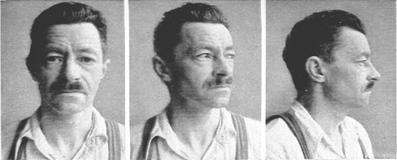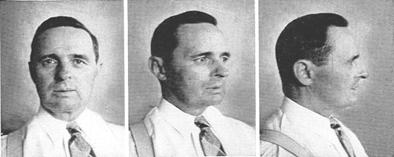|
(Photographic Supplement, Plate 28)
In contrast to the last plate, the present one shows a series of Nordics in
whom the Corded element is notably weak or absent, so that an approximation
to the earlier, smaller-headed, mesocephalic Danubian strain is perhaps
attained. The reason for qualification on this score is that not enough
Danubian crania have been found and described to make this point certain.
FIG. 2 (3 views). A mesocephalic Englishman from Southampton, whose small face, concave-profiled, round-tipped nasal form, and whose lack of angularity or bony extravagance in the cranial and facial skeleton, combined with a high vault, indicate a close similarity to the known skeletal remains of Neolithic Danubians.
FIG. 3 (3 views). A Galician of mixed Ukrainian and Polish parentage; an excellent example of the Danubian type, bound to the soil since the Neolithic, which has reemerged throughout the entire length of the rich agricultural plain which stretches across southern Poland and Russia, while Nordics proper have for the most part moved elsewhere.
FIG. 4 (3 views). A Lithuanian, who although brachycephalic, belongs essentially to the same Danubian type.
|



